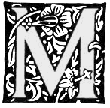The following account appeared in the Strand Magazine of September 1905, prefaced by the portrait photograph shown at the beginning here (but , and accompanied by eight others, tracing her progress from the age of three. — Jacqueline Banerjee

Mrs Hubert Bland (E. Nesbit) — present day.
From a photo. by Geo. Newnes, Ltd.

ISS E. NESBIT, whose stories for children, "The Psammead," "The Phoenix and the Carpet," "The Amulet," and others, are so familiar to readers of THE STRAND, was born at Kennington. She is the daughter of John Collis Nesbit, Principal of the first Agricultural College established in England, but her English blood is modified by a trace of Irish, to which those who are strong on racial influences may attribute something of the humour which can be found in her work. She spent a somewhat wandering childhood in Germany and Brittany as well as invarious parts of England. But it is worth noting that she has generally lived in the country and almost always in houses with large gardens, for among the influencesthat have moulded her nene have probably been more potent than this constant contact with the earth. Thus you will always find in her an intense passion for Nature — not a love of "scenery" such as townsmen possess, but a love of the life and growth of things, of the processes of fruit and flower, which is only articulate in the country-dweller who is also a poet.
The second influence of E. Nesbit's early years has been the influence of poetry, which she has been reading and writing ever since she can remember. She read Scott and Longfellow at the age of five. She began to write verse as soon as she could write at all, and her first published poem appeared when she was only sixteen. When quite a young girl she was brought into touch with the brilliant circle that surrounded the Rossettis. In fact, she was born and bred to poetry, and in prose or verse she has always been in root and substance a poet. Her own emphatic view is that there is no better training for any kind of writing than the writing of verse, and her own prose style, so perfect that one hardly notices that it is a style at all, is certainly a strong confirmation of her doctrine.

In 1879 she married Mr. Hubert Bland, the well-known journalist and essayist; one of the brilliant band of propagandists who created and directed the Socialist movement [287/88] of the eighties. Into that movement E. Nesbit threw herself with all her energy and enthusiasm, and her earlier poems are full of the revolutionary ferment of that stormy decade. Time and circumstance have since given another direction to her talents, but they have neither modified her convictions nor mitigated their intensity. She and her husband are still active and prominent members of the Fabian Society, and it was only quite recently that she contributed to the Daily Mail a powerful plea for the underfed: children in our elementary schools. Those who know E. Nesbit's child-stories, with their almost uncanny insight into the psychology of childhood, must long ago have guessed (if they did not know) that they were not written without a good deal of personal experience. She is the mother of four children, to whom some of her most exquisite poems are addressed, and she lives with her family in an old house with a still older garden (both old enough to have attained to the honour of a ghost) a little way outside London. For she hates London with a deep and abiding hate, as she hates the interviewing, intellectualizing, hair-splitting literary world of London, which seems to her the most aimless of worlds. Two characteristics of E. Nesbit's work may be noted here — her astounding literary fecundity and her even more astounding versatility. No living writer has written so much and yet kept such a high level of excellence.
Bibliography
" Mrs. Hubert Bland ('E. Nesbit')." The Strand Magazine. Vol. 30 (1905) Issue 177. 286-88. Internet Archive. Contributed by the Kahl/Austin Foundation. Web. 29 July 2021.
Created 29 July 2021